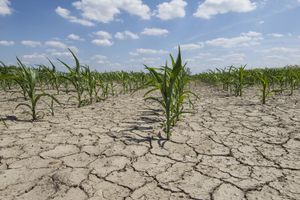Mythbusting New Revenue-Based Disaster Assistance Programs Ahead of June 2 Sign-Up Deadline
 The June 2 deadline for USDA Farm Service Agency’s (FSA) new revenue-based disaster and pandemic assistance programs is fast approaching. The rollout of the new program, announced in January, can come with a learning curve for many producers wondering if they qualify.
The June 2 deadline for USDA Farm Service Agency’s (FSA) new revenue-based disaster and pandemic assistance programs is fast approaching. The rollout of the new program, announced in January, can come with a learning curve for many producers wondering if they qualify.
The Emergency Relief Program (ERP) Phase Two and the Pandemic Assistance Revenue Program (PARP) offer a comprehensive approach to disaster assistance and for producers experiencing revenue loss due to circumstances beyond their control. With any new program, myths abound on the detail surrounding ERP and PARP.
Below are five myths and the reality behind them.
1. You need to submit a completed tax return to FSA to apply for ERPA Phase Two or PARP. Not true. A completed tax return is not required and FSA provides two tools to walk you through the process step by step.
2. You cannot receive ERP Phase Two if you received a payment under Phase One. Not true. It’s possible you can still receive Phase Two benefits if you already received a Phase One payment. There is a possibility that your Phase Two payment may be offset.
3. ERP Phase Two was intended to be an additional payment to those who received Phase One. Not true. Phase Two was never intended to be an additional payment but instead was designed to assist those producers who didn’t receive relief in Phase One.
4. The insurance coverage will cost more than the projected payments. This depends on your unique payment amount, but every producer should talk with their local FSA office to see all their options.
5. The application process is complicated. Not necessarily. A new and different process does not mean it is a difficult one. USDA has put an exorbitant amount of effort to reduce producer burden by streamlining the application process.
